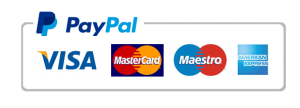Instructions: Response must be at least 310 words written in current APA format with at least two academic references cited. References must be within the last five years. Response must extend, correct/refute, or add additional nuance.
D.R. asthma’s attacks will be under the classification of moderate. This classification is because his flows rates are between 65-70% (in the last three days); and he also has night time symptoms (increasing SOB, wheezing, fatigue, cough, stuffy nose, watery eyes, and postnasal drainage), which began four nights ago, these symptoms have not been relieved by the use of albuterol.
2.
It is important to know first what causes asthma attacks, this is because the airways narrow and it gets hard to breathe; this can result from spasms of the muscles around the airways, inflammation and swelling of the mucosal membrane that lines them, or high amounts of mucus inside them. The patient might have shortness of breath, wheeze or cough as your body tries to get rid of mucus.
Some known triggers of asthma attacks include allergies, air pollution, molds, dust mites, food and food additives, exercise, smoking, sinusitis, medications, weather, smoke, among others. (Gautier, & Charpin, 2017)
asthma
Also, for about 80% of people with asthma, a heavy workout can cause airways to narrow. Exercise is often the main asthma trigger. If the patient has exercise-induced asthma, he will feel chest tightness, cough, and have trouble breathing within the first 5 to 15 minutes of an aerobic workout. For most people, these symptoms go away in the next 30 to 60 minutes of exercise. But up to 50% of people with exercise-induced asthma may have another attack 6 to 10 hours later. A slow warm up may help prevent this. (Mazurek, & Syamlal, 2018).
family history of asthma
Severe heartburn and asthma often go hand-in-hand. Up to 89% of people with asthma also have severe heartburn, or GERD. It usually happens at night when the patient is lying down. Normally, a valve prevents stomach acids from backing up into your esophagus. When the patient has GERD, this valve doesn’t work like it should. The stomach acids reflux, or back up, into the esophagus. If the acids reach the throat or airways, the irritation and inflammation they cause could trigger an asthma attack. Clues that suggest reflux as the cause of asthma include the start of asthma in adulthood, no family history of asthma, no history of allergies or bronchitis, difficult-to-control asthma, or coughing while lying down.
Since there is not too much information about D.R., I would assume that a factor that could be a trigger for his attacks, could be the frequent nebulizer treatment, that he is taking too frequently, besides that, any of the previous factors could apply to him, we would need to perform a deeper assessment to determine what is the cause for his attacks, and try to solve it.
3.
If I would have to make a guess regarding the etiology for D.R.’s symptoms, I would say that some of them are: a family history of asthma, weather changes, cigarette smoking, also ask him if he has any pets at home since pet’s hair can trigger his attacks, any dusky environment.
1.
She has a hypertonic imbalance with high extracellular fluid concentration, all of these is because her sodium level is 156 (normal 135-145).
2.
Some symptoms that she might experience with the potassium levels that she has are:
Palpitations, irregular heartbeats, weakness, nausea or vomiting, chest pain, trouble breathing, feelings of numbness or tingling; some other symptoms could be decrease urinary output, thirst. (Simon, Hashmi, & Farrell, 2020)
3.
The most appropriate treatment for Ms. Brown would be giving her solutions that are salt free isotonic, and in this way her sodium levels could return to normal. By giving her this solution, her fluid volume should increase, and her potassium levels should go down.
4.
Her ABGs indicate that she is experiencing an Uncompensated Metabolic Acidosis.
5.
plasma electrolyte concentrations.
The anion gap (AG) is a calculated parameter derived from measured serum/plasma electrolyte concentrations. Both increased and reduced anion gap have clinical significance, but the deviation from normal that has most clinical significance is increased anion gap associated with metabolic acidosis. This reflects the main clinical utility of the anion gap, which is to help in elucidating disturbances of acid-base balance.
The anion gap is an additional piece of clinical information that can be easily derived without cost from the most commonly requested biochemical profile urea, and electrolytes (U&E). It is not possible to calculate the anion gap if serum chloride is not included in the profile. The principal clinical use of the anion gap is in assessment of acid-base disturbances, particularly metabolic acidosis. Marked increase in anion gap (> 25 mmol/L) is almost invariably incontrovertible evidence of metabolic acidosis.
metabolic acidosis
The distinction between normal. And high anion gap metabolic acidosis allows the anion gap to help in determining the primary cause of metabolic acidosis. The anion gap has additional utility in the investigation of patients. Who present with metabolic acidosis in association with another acid-base disturbance. Reduced anion gap is by comparison with increased anion gap a rare finding that is not associated with disturbance in acid-base balance. But can be indicative of several conditions including hypoalbuminemia, myeloma and lithium intoxication. Accurate interpretation of anion gap results is potentially hampered by lack of consensus on the method of calculation. And significant variability in reference interval. (Rastegar, & Nagami, 2017)

